FIG UPRISING
Up From the Ground
Raising my figs last week got me as excited as, I imagine, opening a kiln does for a potter. What would this spring’s disinterment — “kiln opening” — hold?
In an effort to grow figs outdoors here, despite winter temperatures regularly dipping below zero degrees Fahrenheit (-18° F. this past winter) I buried two plants last fall. Actually, those plants were put in the ground two years ago, but a combination of mice and insufficient cold protection prevented their making successful emergence each spring. Figs are resourceful plants, though, and new shoots sprouted each year from the roots.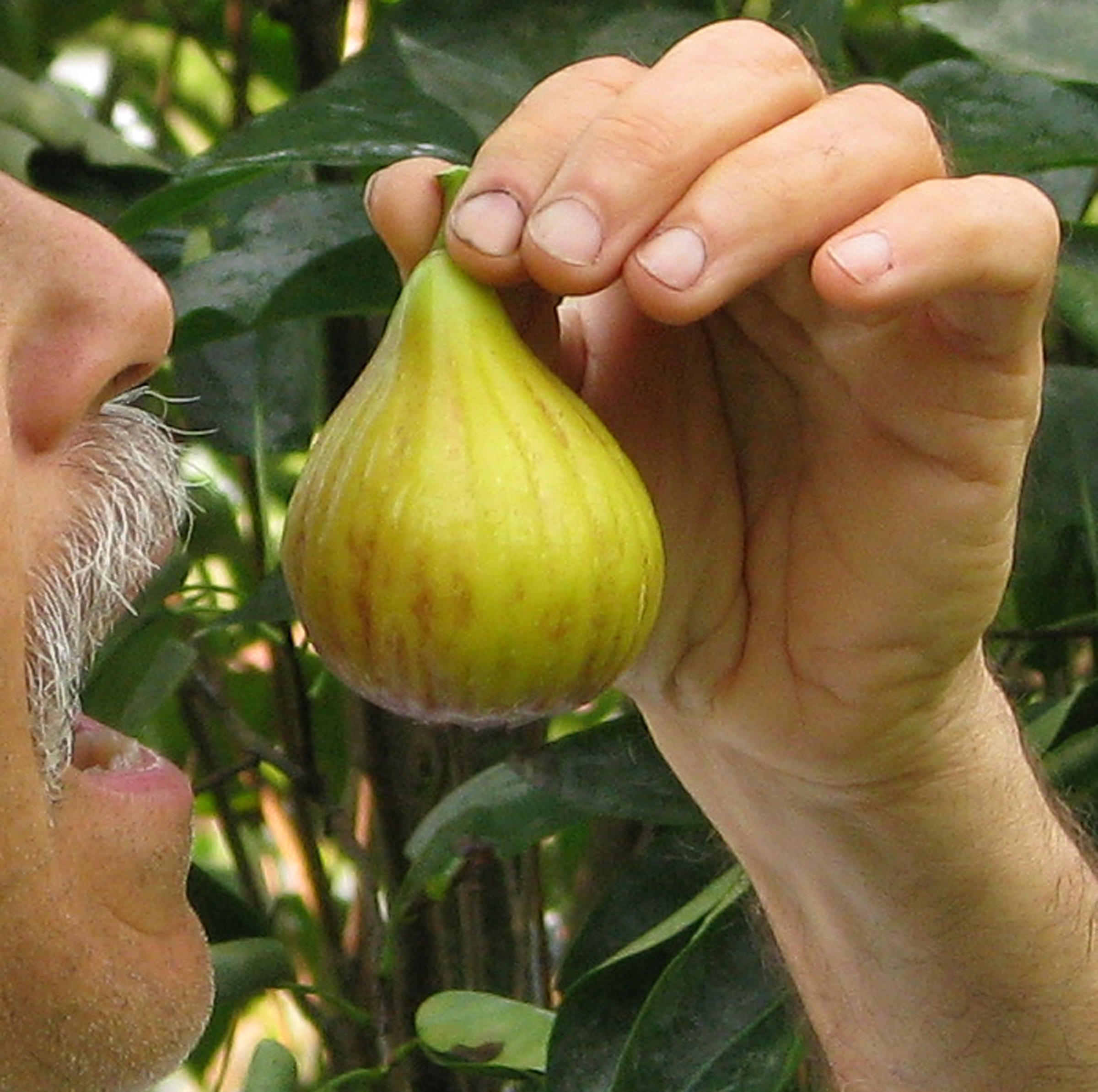
My plan has been to train the figs the same way that I train the four fig plants in my greenhouse, as horizontal, single cordon espaliers. Allow me to explain: Espalier is the training of a plant to an orderly, often flat, geometric form; and a cordon is a permanent branch of an espalier. During summer, vertical shoots with a fig next to practically every leaf grow along the cordon.
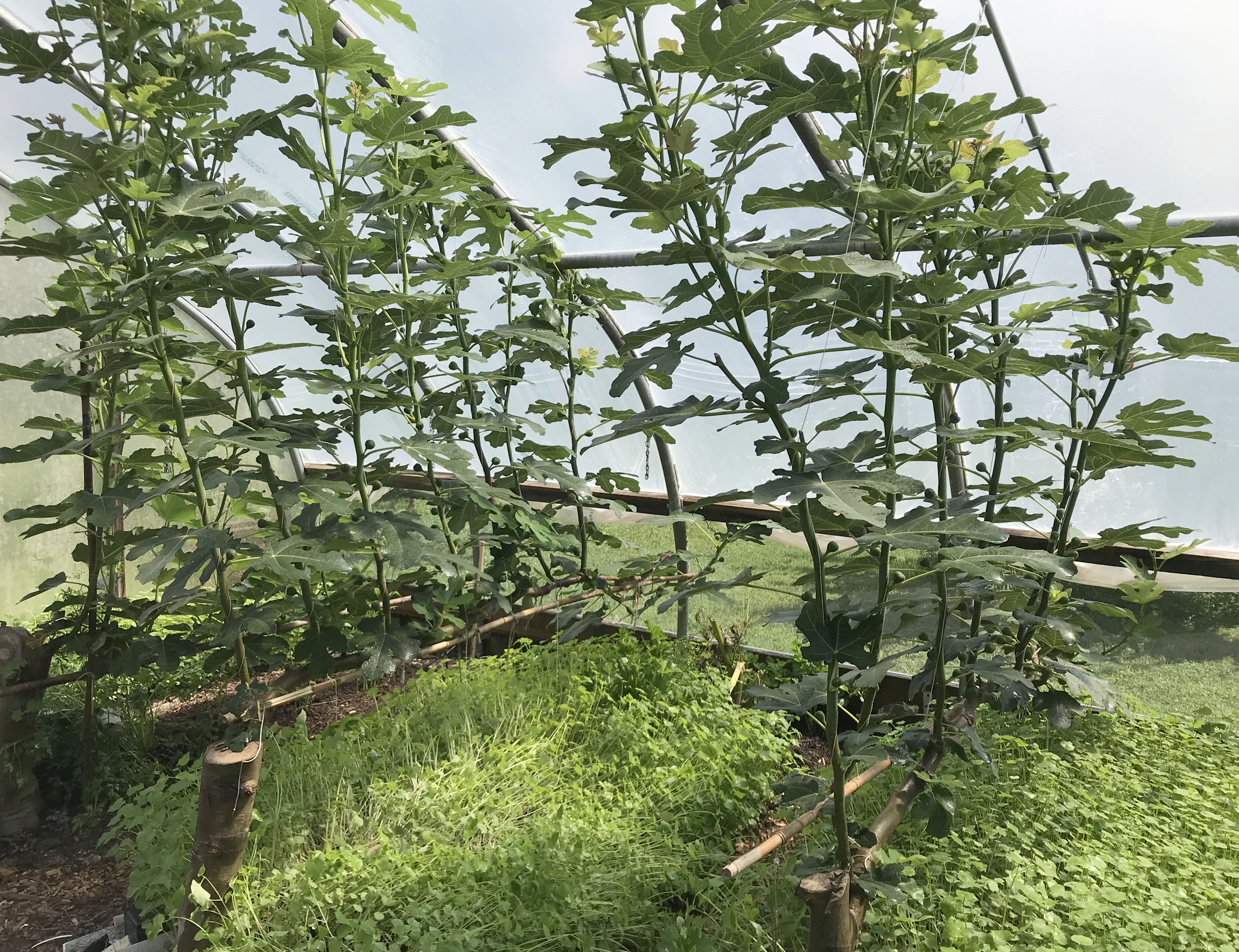
After pruning at the end of the season, each plant is reduced to nothing more than a short trunk off which grows one, horizontally trained cordon.
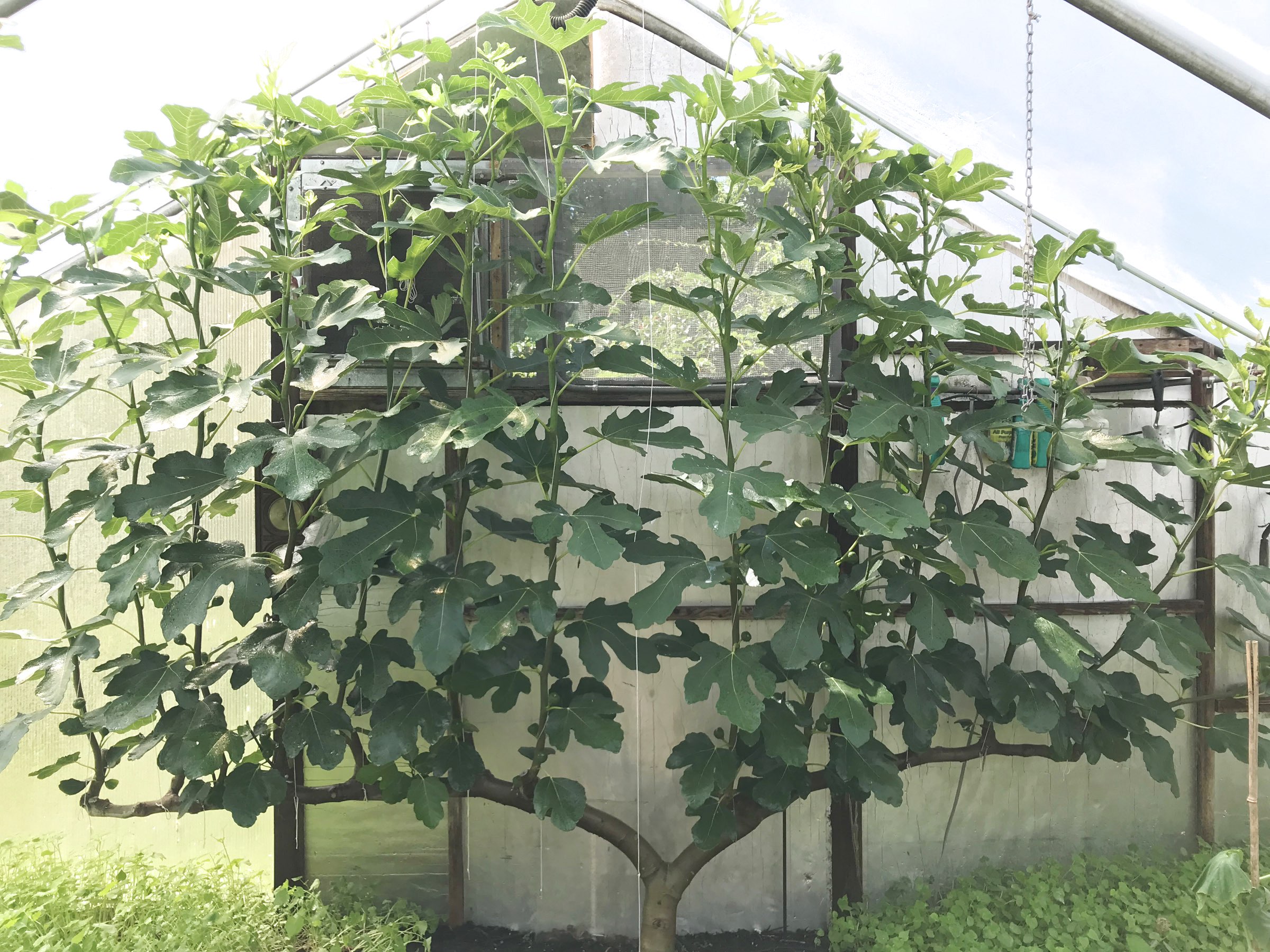
This pruning would not work with most fruit trees because they bear fruit on older wood. Figs have a unique fruit-bearing habit. With most varieties, fruits are borne along new shoots of the current season. (There are some varieties that bear fruit, instead, on one-year-old stems. And still others that bear on both new shoots and on one-year-old stems.)
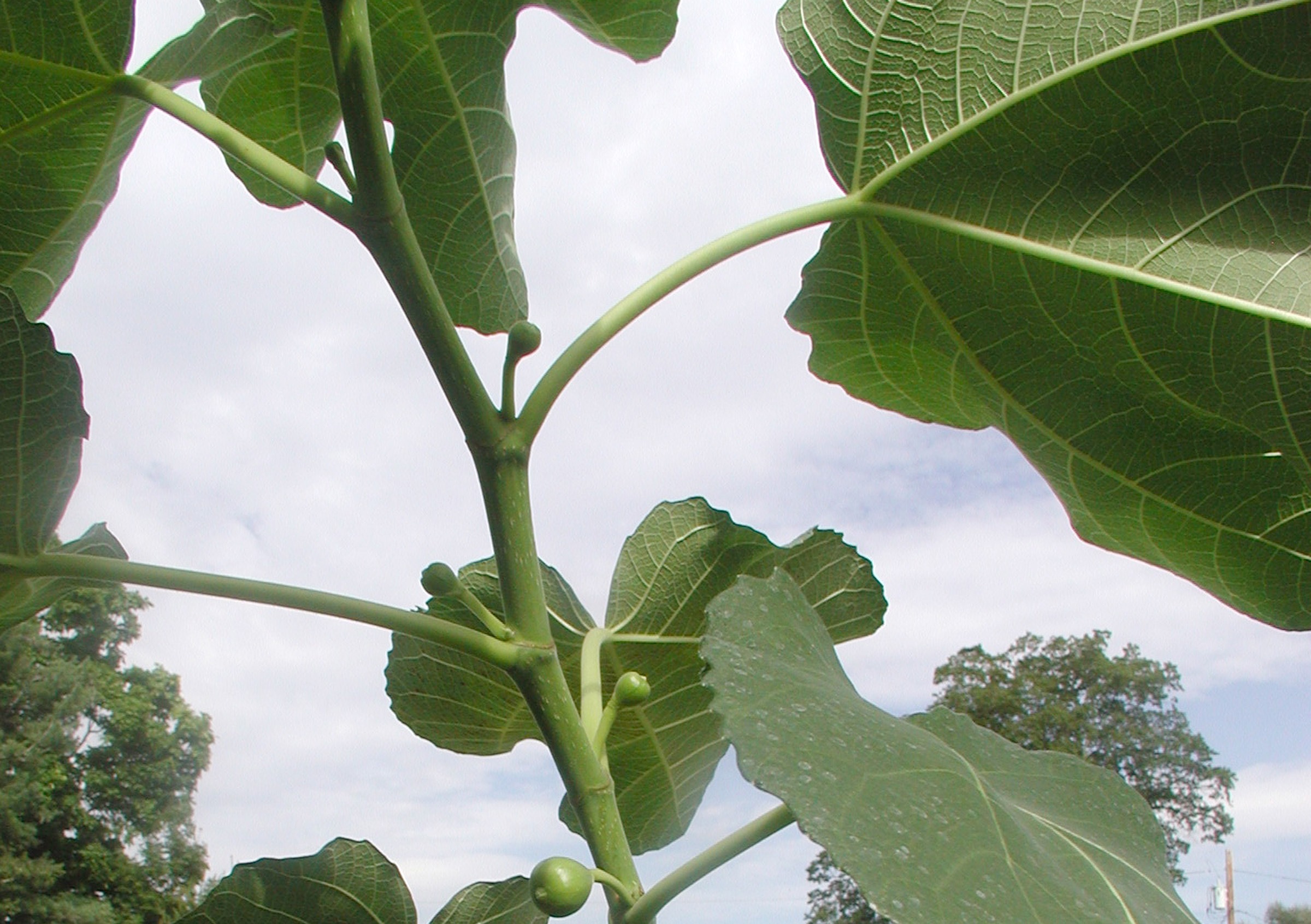
Young fig shoot with fruits forming
Pruning my espalier figs is especially easy. At the end of the season, vertical shoots growing off the cordon are all lopped back to the cordon. The following spring, new fruit-bearing shoots arise. Well spaced, vertical ones are saved, all others are cut back and, at the end of the fruiting season, in fall, all those vertical shoots are also lopped back to the cordon. And so on, year after year.
Laying Figs Down
My plan was to do all this with my outdoor figs, with one additional wrinkle. So that I could protect the plants from winter cold, each plant’s horizontal cordon would be at or below ground level. One outdoor fig’s cordon is at ground level; the other is a few inches lower. The one below ground level is easier to cover and gets more of soil’s natural heat, which is 50 degrees F. year ‘round a few feet deep, less so nearer the surface. So the covering does not have to mound as high, for less of a gravesite look.
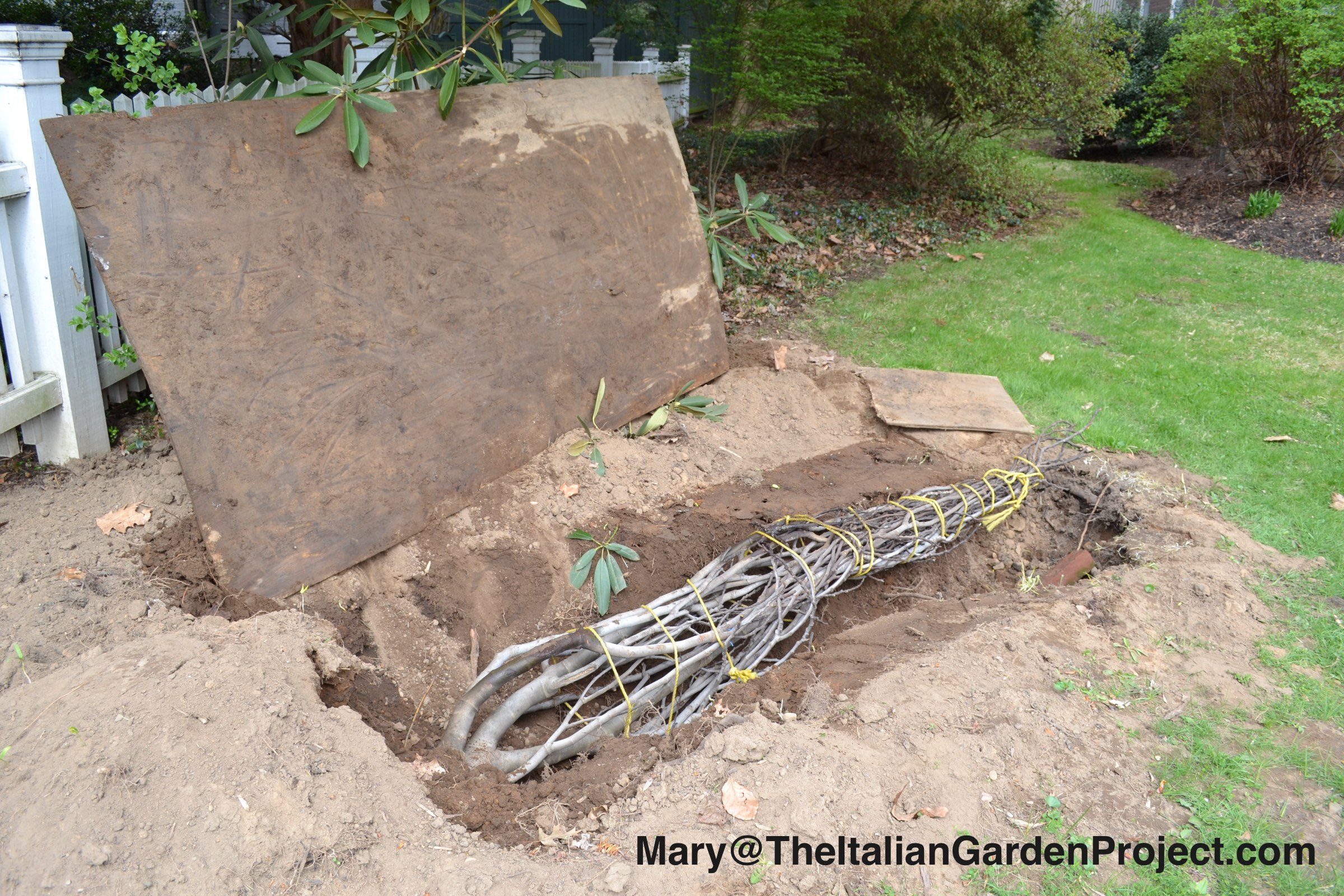
Fig stems (not mine) buried
Figs tolerate temperatures into the ‘teens so I waited to cover the cordons for winter until December. Just before I covered them, I took precautions against mouse damage by spraying the plant with Bobbex, a very effective animal repellant. Mice are allegedly repelled by mint so I also strewed the ground with mint stems of which I have plenty. Perhaps I’ll plant mint there. Next came a large scrap of plywood topped by a few inches of soil and then hay.
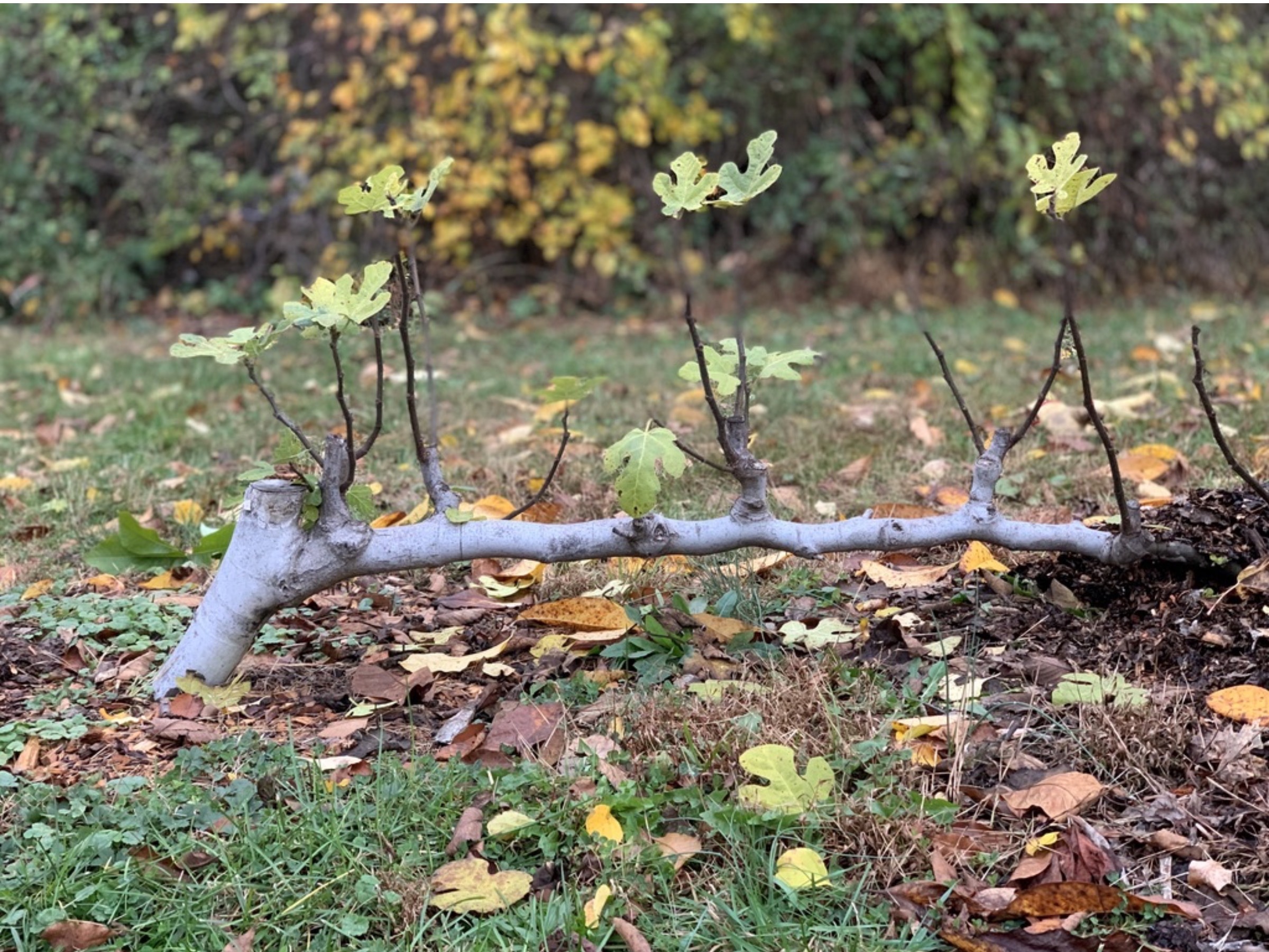
Earlier version of outdoor, espalier fig
The goal was to keep the figs hibernating in the ground through winter, then raise them up late enough so new growth would not be threatened by cold. Once growth begins, the plants’ tolerance for cold diminishes dramatically.
After shoveling off soil and pitchforking away the hay, the big moment arrived for the unveiling . . . Drum roll . . . Removing the plywood revealed fig stems looking happy and healthy.

Outdoor figs lifted in spring
For insurance, I had bundled together a few healthy, robust, one-year old stems and buried the bundle. I could train one stem to become the cordon and, if the variety can also bear on one-year-old stems, leave the others to bear that crop, which is earlier. I had left the more shallow plant with only one stem which I’ll also train horizontally as the cordon.
Many Ways to the “Mountaintop”
Over the years, I’ve tried many ways of growing figs where winters can be frigid. My first efforts were with potted plants that I lugged down steps each winter into my unheated basement. (The plants don’t need light when leafless.) This worked well as long as the plants could be kept cool enough and dry enough so that growth didn’t begin before their spring journey up the steps and outdoors.
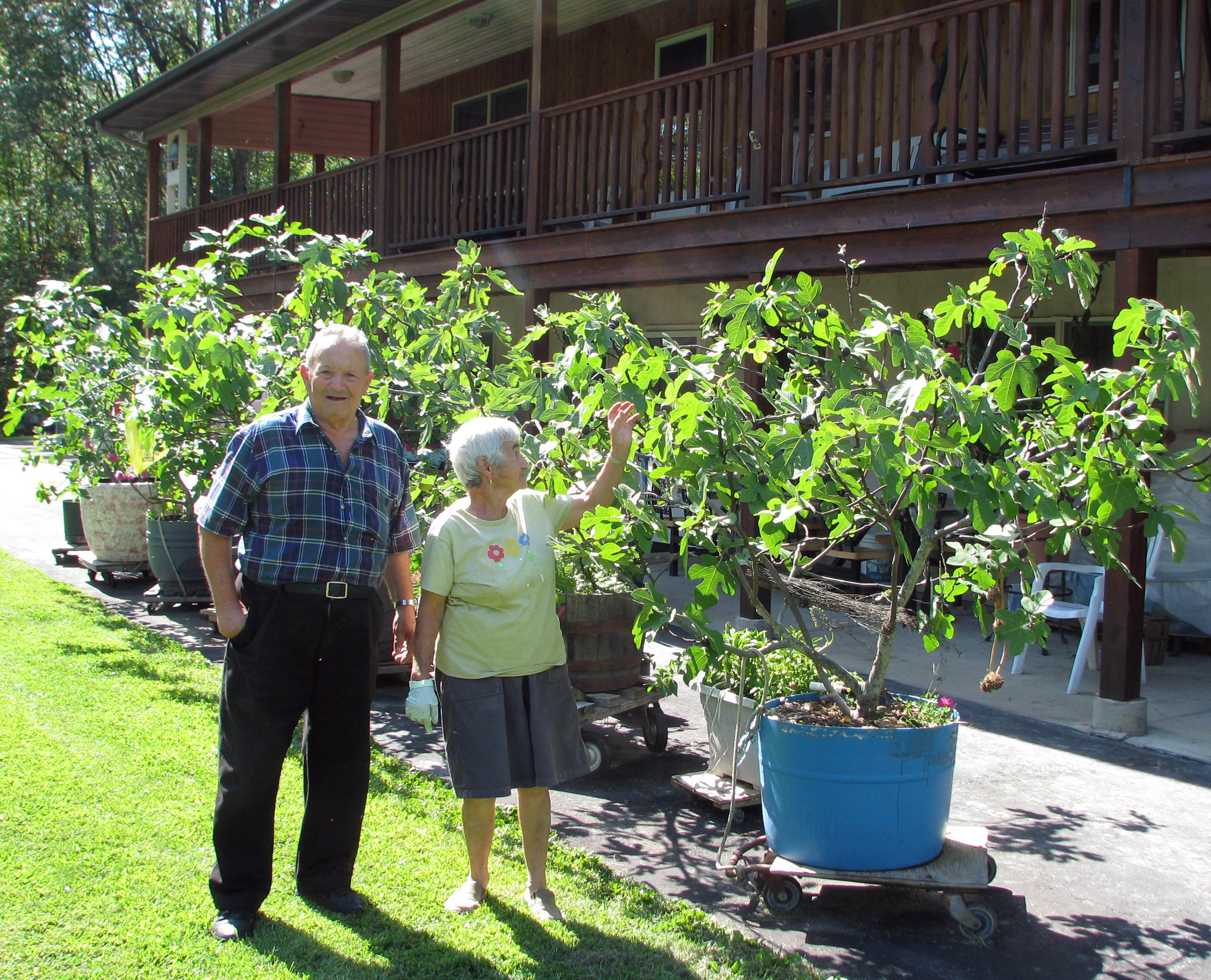
Large fig plants on wheels
A variation on this was growing a plant in a pot with holes in its sides, sinking it into the ground, then cutting off the wandering roots as I dug up the whole pot for storage. Such plants could be independent, not needing summer watering, once roots reached out again into the surrounding soil from the re-sunken pots.
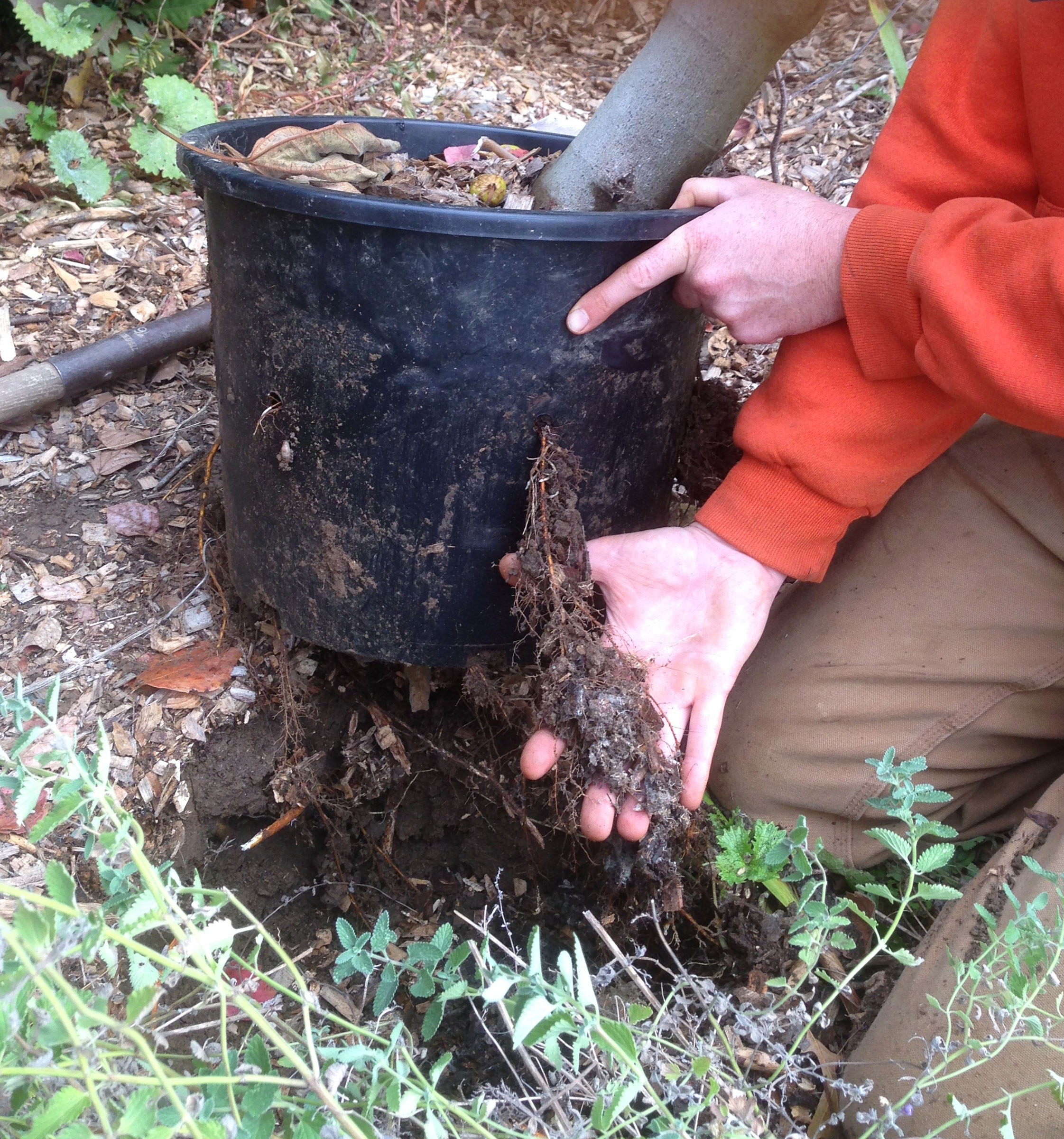
Potted fig lifted out of ground for winter storage
I’ve also swaddled upright plants, which was unsuccessful because winter temperatures dipped too low.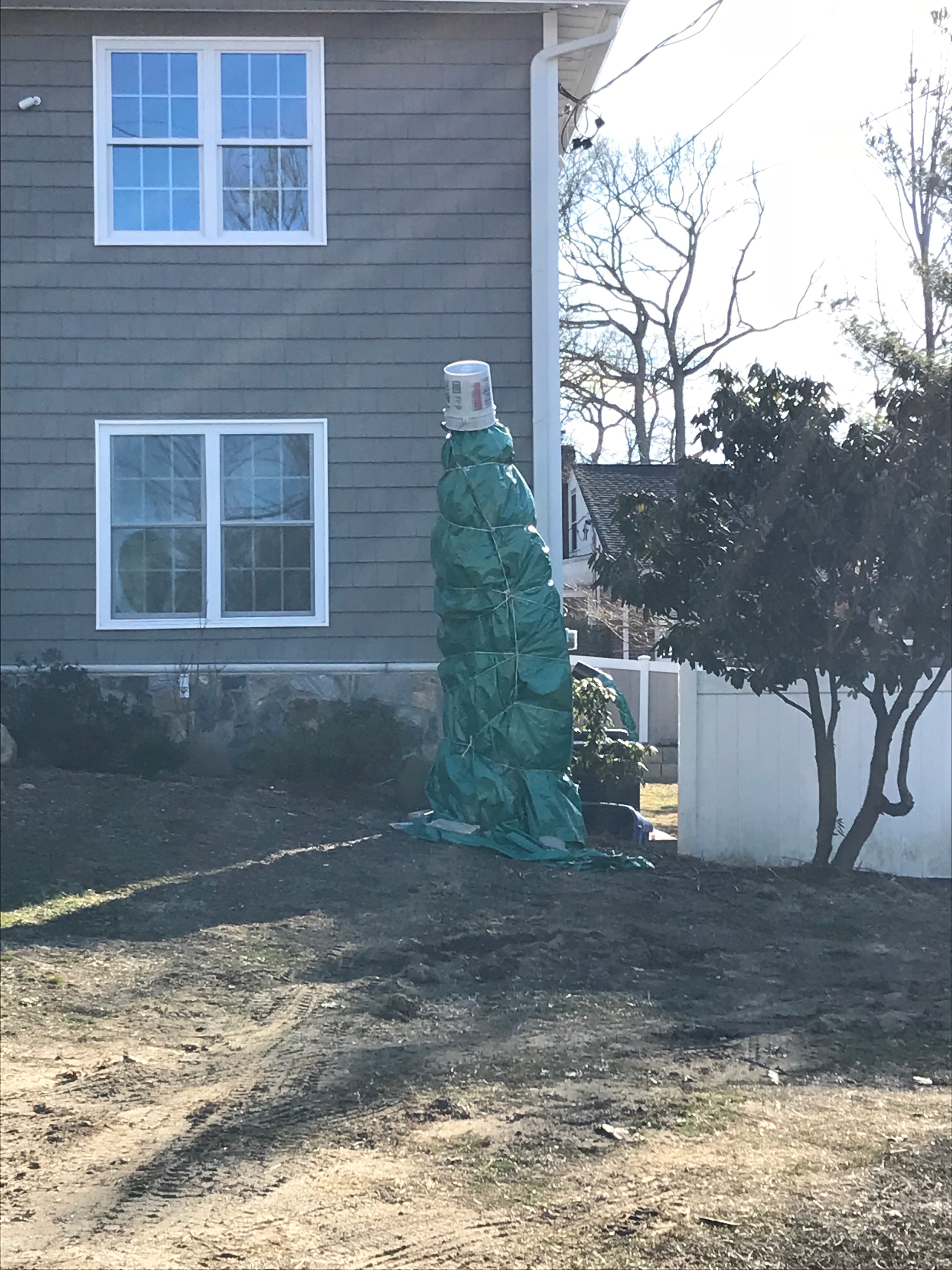
And then there are my greenhouse figs, a total success. Is that cheating?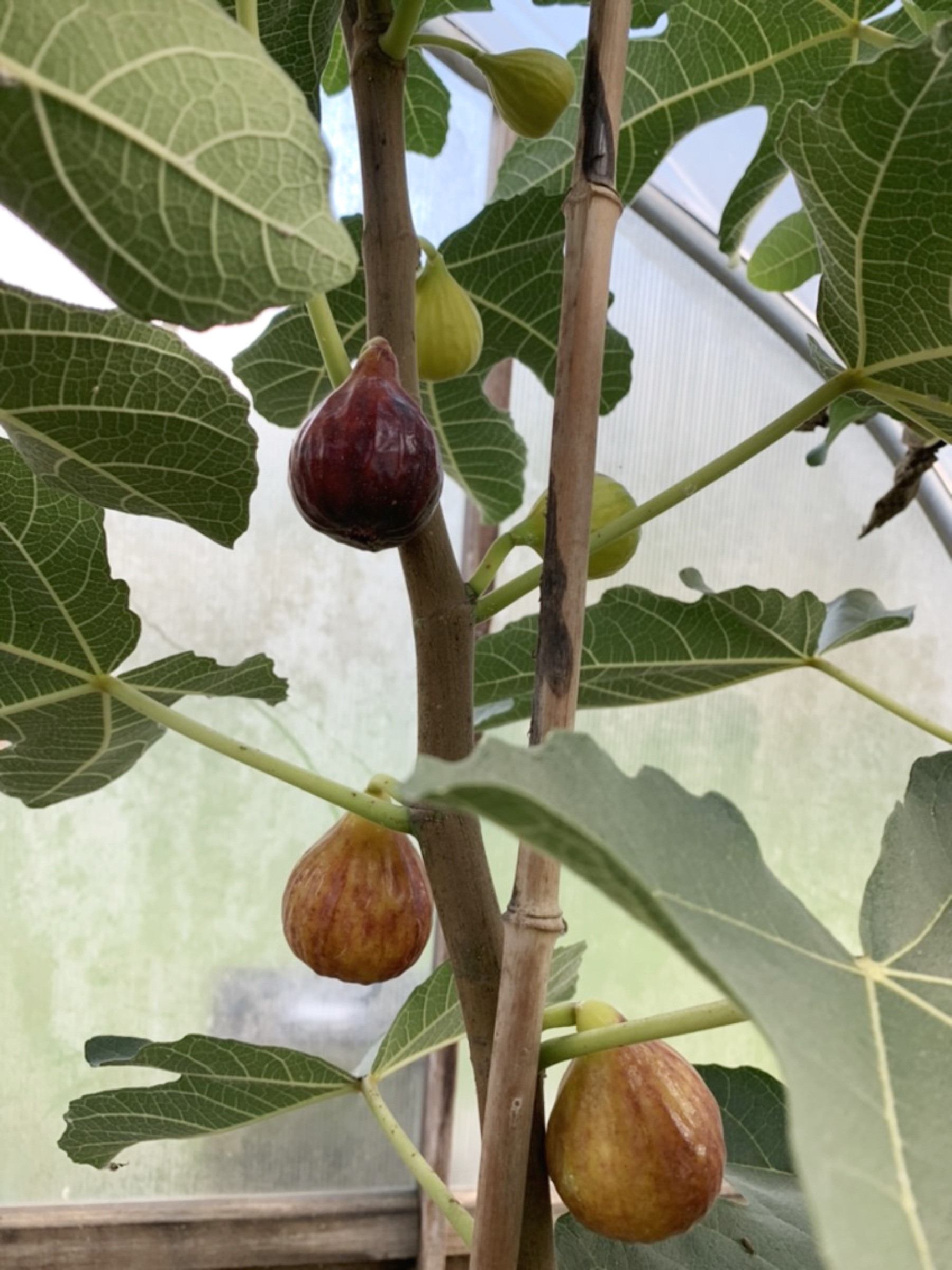
Want to know more? I detail the many ways to harvest fresh figs even in cold winter climates as well as varieties, pruning, and other details needed for successful harvest of fresh figs in my book Growing Figs in Cold Climates.


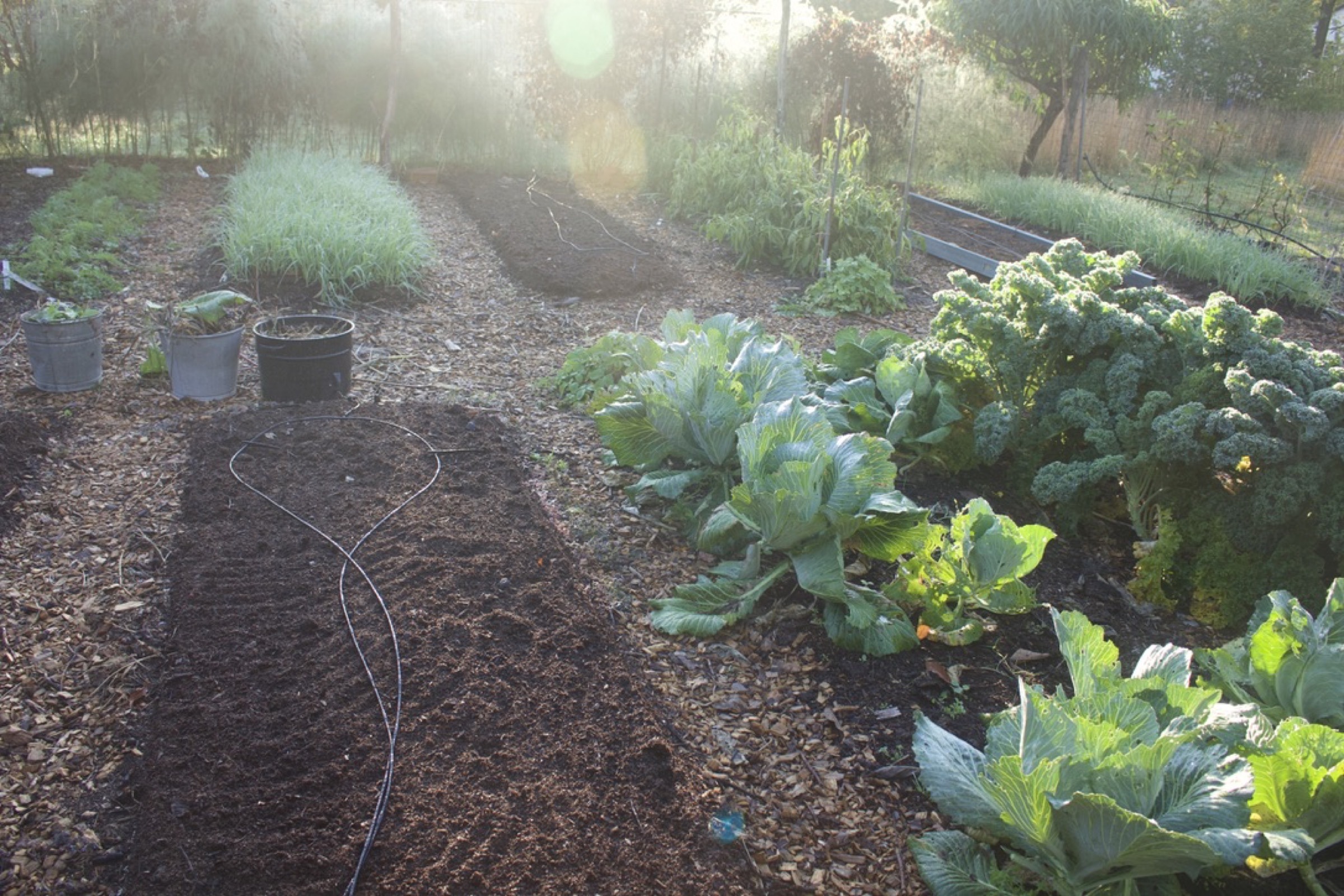
This was just what I’ve been looking for! I had covered young cold hardy varieties and opened them after a few 80 degree days in March (In Maryland). I was afraid they’d break dormancy in the heat and die without light. They were alive and healthy. A few days later we had a killing frost and they did not make it. How do you judge when to uncover them if you know it could get cold again but you are experiencing early warm weather?
Thanks for all your great information!
I would say, if in doubt, cover them. It showing no signs of awakening, they’re good to a few degrees below freezing. But once they even show hints of buds swelling, I’d cover them if below freezing temperatures are expected.
Thanks Lee. I say your video on fig training on NAFEX. I’m hoping to train mine t a central cordon low to the ground as you have done. Should I be cutting new growth throughout the summer or is there a single best time of year to cut back all but a cordon or two? Thanks!
I would wait until the end of the season, after plants have dropped their leaves. Any cutting now will suppress growth and development of the trunk and cordons.
Thanks for the advice!
Hi Lee, Fellow Vermonter & gardener here, thanks for the info, I grow lots of Peaches & many other things in the Champlain valley. In my garden & Radical greenhouse ( it is solar powered and rotates to track the sun), but have not tried Figs. Thanks for the inspiration! A partials subterranean greenhouse seems like a great option.
Wow! Rotating with the sun.